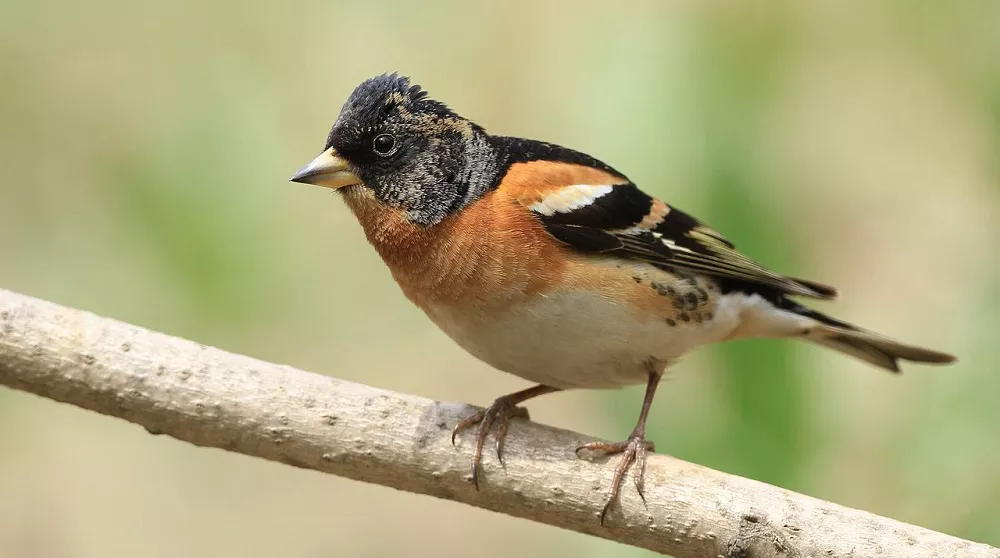The Brambling is a small passerine bird that belongs to the finch family. They are migratory birds that breed in the forests of northern Europe and Asia and spend their winters in southern Europe and Asia. These birds are known for their striking plumage and their tendency to form large flocks during the winter months.
- Appearance:
Bramblings are small birds, measuring around 13 cm (5 in) in length and weighing between 15-25 g (0.5-0.9 oz). They have a distinctive orange breast, white belly, and black head and wings, with white wing bars. The females have less bright plumage than the males. They have a short, conical beak, which makes them well-suited for feeding on seeds.
- Behavior:
Bramblings are social birds that form large flocks during the winter months. They are migratory birds and will travel long distances to find food and suitable habitats. In the wild, they feed on a variety of seeds, including those from birch, alder, and spruce trees.
- Breeding:
Bramblings breed in the forests of northern Europe and Asia, and the males will display an elaborate courtship ritual to attract a mate. The female birds will then build a nest from twigs, grass, and lichen, and lay 4-6 eggs. The eggs are incubated for around two weeks before hatching. The young birds are then fed by both parents until they are old enough to leave the nest.
- Conservation:
Bramblings are classified as a species of “Least Concern” by the International Union for Conservation of Nature (IUCN). However, their populations are declining in some regions due to habitat loss and changes in agricultural practices. In some countries, they are also captured for the pet trade, which can further impact their numbers.
The Brambling is a small but beautiful bird species that is known for its striking plumage and social behavior. They are an important part of the ecosystem, as they play a vital role in seed dispersal and insect control. It’s essential to protect and conserve these birds, and their habitats to ensure their survival for future generations.


 Facebook
Facebook  Instagram
Instagram  Youtube
Youtube 